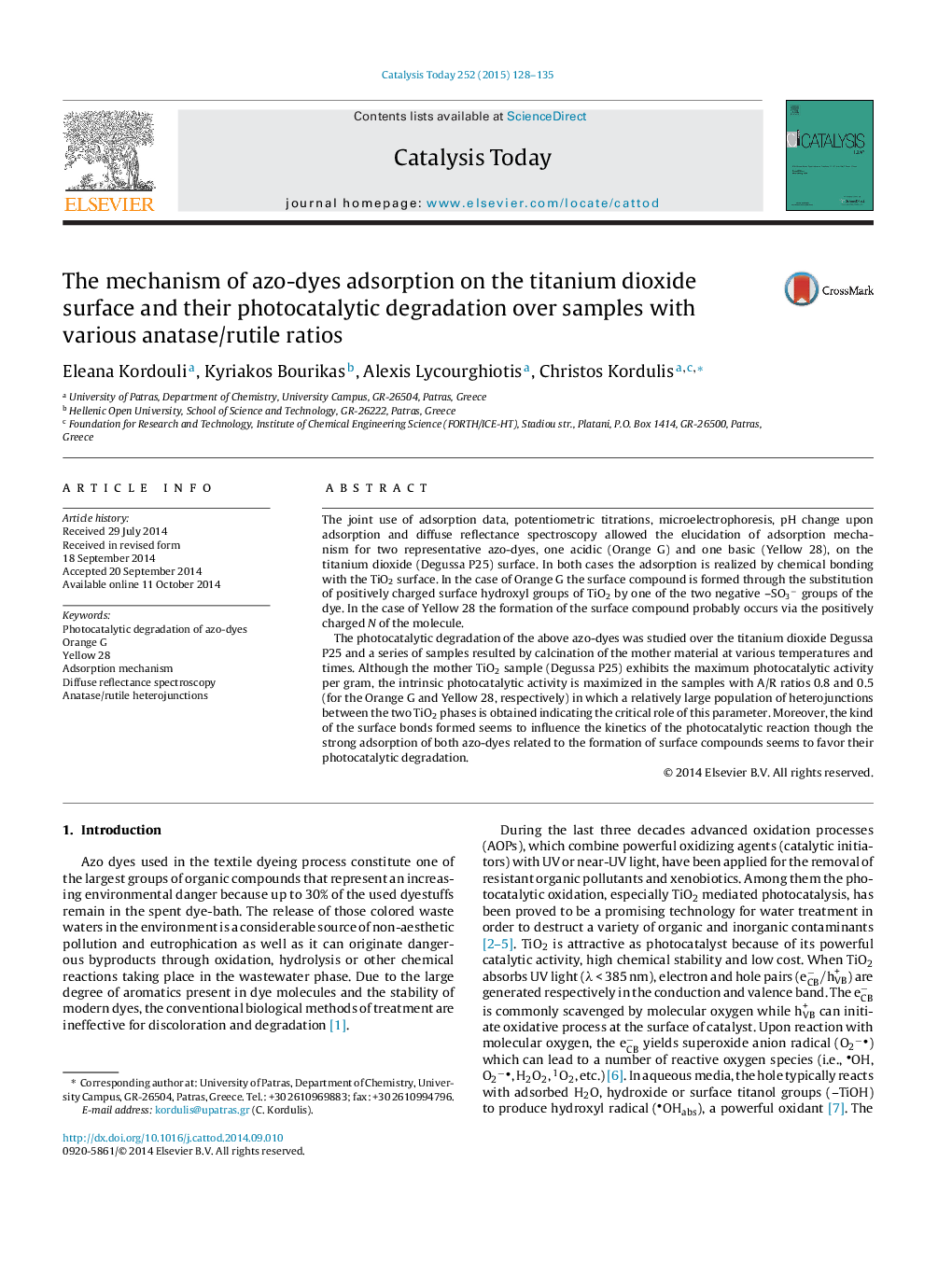| کد مقاله | کد نشریه | سال انتشار | مقاله انگلیسی | نسخه تمام متن |
|---|---|---|---|---|
| 53860 | 46987 | 2015 | 8 صفحه PDF | دانلود رایگان |
• Adsorption of dyes OG and Y28 on titania surface is realized by chemical bonding.
• The adsorption mode of the azo-dyes influences the kinetics of the photocatalytic reaction.
• The anatase/rutile (A/R) ratio is a critical parameter in the photocatalytic activity.
• Activity is maximized in the sample with A/R = 0.8, for the OG photodegradation.
• Activity is maximized in the sample with A/R = 0.5, for the Y28 photodegradation.
The joint use of adsorption data, potentiometric titrations, microelectrophoresis, pH change upon adsorption and diffuse reflectance spectroscopy allowed the elucidation of adsorption mechanism for two representative azo-dyes, one acidic (Orange G) and one basic (Yellow 28), on the titanium dioxide (Degussa P25) surface. In both cases the adsorption is realized by chemical bonding with the TiO2 surface. In the case of Orange G the surface compound is formed through the substitution of positively charged surface hydroxyl groups of TiO2 by one of the two negative –SO3− groups of the dye. In the case of Yellow 28 the formation of the surface compound probably occurs via the positively charged N of the molecule.The photocatalytic degradation of the above azo-dyes was studied over the titanium dioxide Degussa P25 and a series of samples resulted by calcination of the mother material at various temperatures and times. Although the mother TiO2 sample (Degussa P25) exhibits the maximum photocatalytic activity per gram, the intrinsic photocatalytic activity is maximized in the samples with A/R ratios 0.8 and 0.5 (for the Orange G and Yellow 28, respectively) in which a relatively large population of heterojunctions between the two TiO2 phases is obtained indicating the critical role of this parameter. Moreover, the kind of the surface bonds formed seems to influence the kinetics of the photocatalytic reaction though the strong adsorption of both azo-dyes related to the formation of surface compounds seems to favor their photocatalytic degradation.
The adsorption mode of OG (left) and Y28 (right) on TiO2 influences the kinetics of its photodegradation.Figure optionsDownload high-quality image (165 K)Download as PowerPoint slide
Journal: Catalysis Today - Volume 252, 1 September 2015, Pages 128–135
